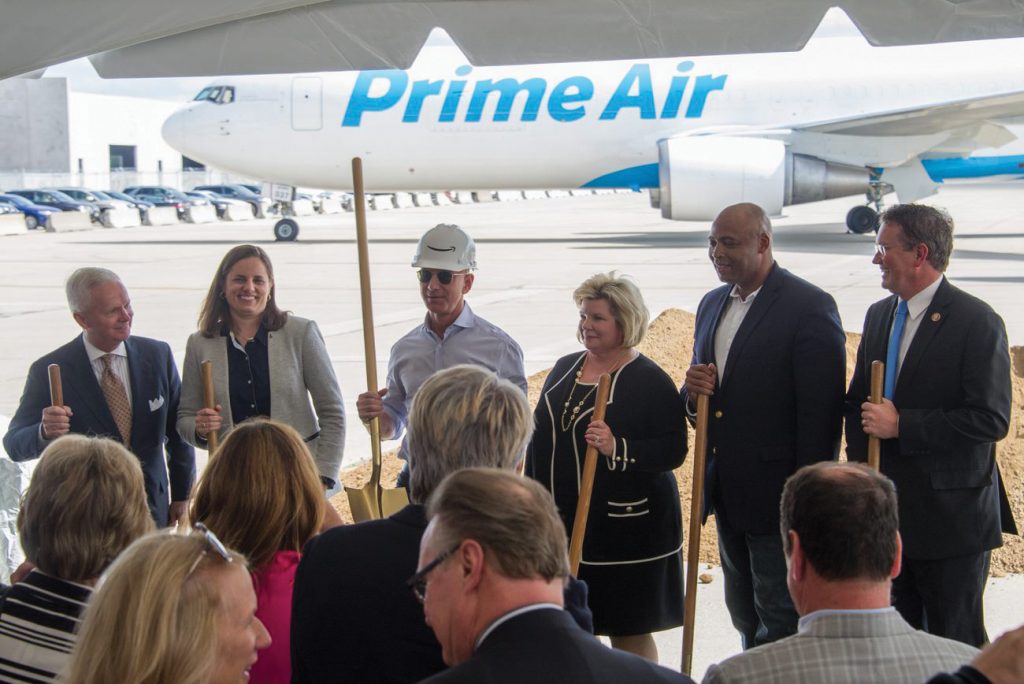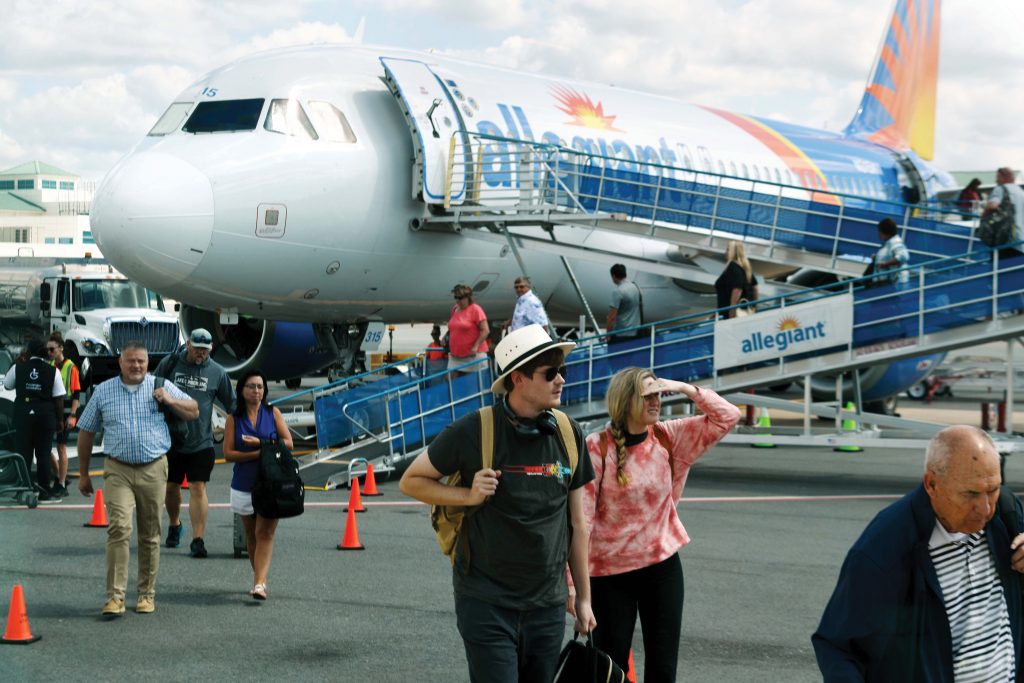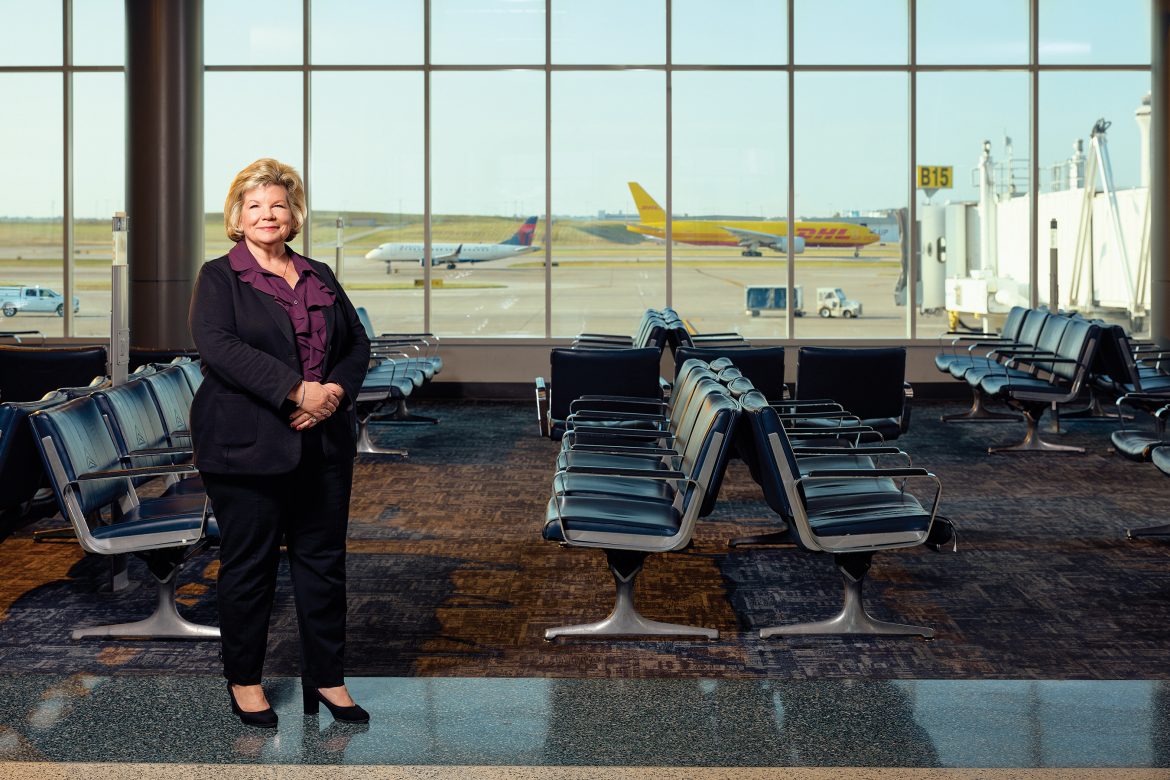When Candace McGraw was named chief executive of the Cincinnati/Northern Kentucky International Airport in 2011, the region’s primary airport was in a tumultuous state. Her predecessor had abruptly resigned after only two years on the job. Delta Air Lines’ near-monopoly on terminal gates had resulted in some of the highest airfares in the country, and Cincinnatians would often travel 100 miles or so to find cheaper fares at another airport.
Delta’s merger with Northwest resulted in closure of the airline’s expansive hub here and a steep drop in the number of passengers utilizing CVG. But its years of dominance meant other carriers had been crowded out and no low-cost carriers were operating out of Cincinnati. Thirteen years later, multiple low-cost carriers are available, British Airways is flying out CVG, the airport has become a major cargo hub, and it helps drive the region’s economy with an annual economic impact of more than $9 billion.

Earlier this year, McGraw announced she plans to retire in June 2025. In addition to her leadership role at CVG, she is chair of the Cincinnati Regional Chamber’s board, chair of the Kentucky Chamber of Commerce, and chair of the Airports Council International’s World Governing Board. Her leadership will be missed at each of these organizations and across the region as well.
In an exit interview, McGraw describes the challenges she faced in leading the airport’s turnaround and what’s next for her and for CVG.
When you were named CEO in 2011, what was Job One for you? It was stabilization. I think about the chunks of time in my role at the airport: The first five years was stop the bleeding, the next five years was stabilize the patient and get them healthy, and this last five years was OK, we’re running a marathon now, we’re in good shape, we’re more of a contender.
CVG was once known for having the highest airfares in the country. How did that get turned around? If you recall back then, we had one primary carrier. And if you recall the lay of the airport, we had three terminals. Terminal 3 was all Delta. At Terminal 2, you only had eight gates for every other carrier. We had no low-cost airlines.
The first order of business was giving those existing carriers a place to grow, and then attracting new carriers. Once you had carrier diversity, you knew you were going to get lower prices because competition would ensure that you ended up with lower airfares. And now about 30 percent of our travel is done through low-cost carriers. It brings some price discipline from the carriers.
What broke the barrier for low-cost carriers? We didn’t have facilities in which they could even operate because of that old system with those eight gates in Terminal 2. They didn’t have a place from which they could operate. We rightsized the facilities so we could attract new carriers. And then we had to convince a carrier. In our case, it was Frontier who came in and were the first low-cost carrier at CVG.
It was a huge win. They put in six flights a week to Denver, and we celebrated that mightily and trumpeted it very loudly, because we knew if they could be successful it would be a proof point for other carriers to be able to come here.

What did the loss of the Delta hub mean? Delta and Northwest merged back in the mid-2000s, around the same time U.S. Air and American merged. There was consolidation in the industry. Delta made the decision to concentrate more of its business in Detroit and Atlanta based on all the investments they had around the country between the two airlines at the time. And, fortuitously, that opened up facilities for other carriers to move in.
So while we had millions more passengers than we do today, 90 percent of them were not our friends, family, and neighbors traveling out of here. They were connecting through. So now we have air service that meets local needs in terms of business and leisure travel.
How did you get the airport on good financial footing and diversify the revenue stream? Well, it’s Basic Business 101: What do you have, and how do you utilize and exploit it the best way possible? We said we had a great passenger base here and started to dive into the business travel analysis: Where are passengers coming from? Where are they going? What air service do they need? We came up with the business case around that and then went out and made that case, knocked on the airlines’ doors and said, You know, we think your airline would be successful in CVG if you served these particular markets. Just doing that roadshow.
That was first. Next was looking at the great cargo business we had with DHL. They’d been here, moved up to Wilmington, and then came back here at the end of 2009. We said, How can we make you more successful? How can we work with you hand-in-glove to make sure you can grow here? CVG is now DHL’s second-largest operation in the world, behind only Leipzig, Germany, and some days we move more cargo than their No. 1 international operation.
Some people say they miss the connectivity we used to have as a Delta hub. But we’re much more financially stable and sustainable now. And this community has much better air service than it did, because back then 85 to 90 percent of our passenger base was connecting passengers.
Third, we looked at the land available to us that was sitting dormant. We did a land-use development plan for what we should develop, where, and how. That’s ultimately been a huge success for us, because right now we have a variety of land tenants paying our bills.
What has the land development meant? The airport was very land rich. We have 7,700 acres here, and we had a good bit of it close in that could be developed—the 650 acres that Amazon is operating on now, for example, was prime for aeronautical development. We also have acreage that’s farther afield, such as the 170-plus acres between here and Florence that we developed for a GE manufacturing site, a Wayfair site, and some other diverse tenants that didn’t necessarily need be located next to the airfield.
We looked at what sort of tenants could be there, then went out and recruited them. We consistently looked at how to diversify the commercial carriers and the cargo business, because we didn’t want to create another 800-pound gorilla like Delta that was going to dictate how we did business.

Opening the Amazon Air hub was the biggest economic development event in this region in a long time. How did you close the deal? We were out peddling our land, talking to lots of people about what we had available for development. A consultant approached us to say they were working with a tenant that needed a large stretch of land and that needed to move quickly—except the consultant seemed to be moving slowly. I said, Well, if you need to move quickly, then you need to step aside and just bring your client in here and we’ll work out a deal. We sat down with Amazon and just hammered out a deal in fairly short order. We really negotiated in earnest starting in October 2016, and we signed the deal and had it approved by our board in January 2017.
I asked the Amazon people what made them close the deal here, and they said we have well-maintained runway infrastructure already in place, well-maintained highway infrastructure in place, a workforce that has a deep history in aviation, and we could move at the speed of business. Ever since that time, I’ve used those as the touchpoints of what makes a deal important: infrastructure, having trained people, and then being able to move quickly and get decisions made.
What does the growth in cargo at CVG (Amazon, DHL, others) mean for the region in general? It means we have a really good base of operations that will keep CVG fiscally strong, which helps with commercial air service. The more cargo operations we have landing here, the lower the landing fees we charge our commercial operators. It’s a great synergy between cargo and passenger carriers in terms of making sure our airport fees are competitive.
What it means for the broader community is, of course, jobs. It also positions this region to attract, retain, and grow different jobs, manufacturers, and business sectors. If I was a widget maker and could locate anywhere in the world, I’m going to locate near here, because I want to be able to get my widget to market with redundancy every day. If you locate somewhere in proximity to CVG, you can bring your widget out here at 10 p.m. and have it the other side of the world first thing in the morning. And you have redundancy, because you can use either cargo shipper.
The emergence of COVID was a crisis for air travel. How did you cope with that? It was horrific in terms of waking up one morning and 85 to 95 percent of your commercial traffic had been altered. Thankfully, we had already diversified our business, so we had a playbook on how to get out of the difficult situation because our team had already been through it.
As horrible as the pandemic was, the airport already had a diversification strategy. We had cargo that did really well, and we had land development with diversified tenants paying rent. So we tightened our belt, and thankfully we didn’t have to lay off anyone.
How has air travel changed in the time you’ve been at CVG, both leisure and business? Business travel looks different now than it did pre-pandemic, because you have meeting substitution methods that have become quite common and you don’t have to make as many business trips as you once did. But there’s a term in the industry called “bleisure travel,” a blend of business and leisure travel. Now people are traveling for work and tacking on a few days extra if they can. That’s sort of a new twist in the industry.
CVG has developed a reputation for innovation. What has that meant for the airport? We have a marvelously supportive board that gives us the license to try things and figure out what the next thing is that might be important. We have all our passengers who travel through here, so it’s a great living lab for companies that want to come here and innovate.
In terms of leaning into what’s next in aviation, we’ve been working a lot in the advanced air mobility sector—think Jetsons, flying cars, what’s coming next, and how that evolves. Think about how Cincinnati became an important city in the first place—it was our location on the river and what that river traffic meant. And then we grew with the advent of the Delta hub here, and that helped the city attract and retain business and grow. So now we’re trying to think about the next disruption and how advanced air mobility will impact travel and the aviation industry. We’re dipping our toes into it.
You’ve been active in the community through service on boards and in other organizations. How does you role as airport CEO impact the larger community? I think it’s important to be at those tables and have conversations with people about what helps their businesses thrive and grow. I’m wired to participate and engage, and I think we’re all better if we can lean in and develop each other’s strengths. I like to say we’re Zip code agnostic, and I try to keep a foot on both sides of the river because we serve everyone across the region.
I have the privilege of being chair of the World Governing Board Association, which provides CVG with global recognition. That’s important, because as I sit at that table I get to tell the story of our region and what’s going on here, which literally put us on the map for people from Bahrain, Singapore, or you name the region of the world who would have otherwise not know about the Cincinnati and Northern Kentucky area.

You have eight months before you officially retire. How is the search for a successor going? The board is conducting a search right now. They’ll name my successor probably late fall, I assume, with the goal of having that person be in this seat early next year. Then we’ll work through a transition plan—whatever they might need or however that might look—and I’ll officially be out the door here as of June 30.
What’s on your “to do” list in these next eight months? One of our projects is called Hanger Row, which is a development of several hundred acres for which the state of Kentucky invested $20 million last year. We’re doing some environmental studies and site prep work now. It’s an area that can support probably three or four more hangars along with maintenance repair shops, paint shops, avionics, and maybe even aircraft manufacturing.
Another project is a global logistics park for non-express cargo. Those are the large shipping items that come through, and right now that’s only about 5 percent of our business. We’ve signed a tenant there, and they’re in the process of building a facility. We’ve already done all the ramp work for it.
We’re also in the midst of our terminal modernization program. We’ll be doing a whole facelift and renovation throughout the terminal. Our folks do a great job of making it look great and fresh, but it hasn’t gone through a major renovation since it was first built in the 1990s. That will be a several hundred-million-dollar project, including a $200-million baggage-handling system that’s already under construction.
When you retire, you’re probably not going to fly off into the sunset. What are you thinking of doing? Well, my husband and I will stay here. Our family’s here. The first order business will be to do some personal travel. I’m looking at some different things. I just want to enjoy the next phase while I’m young enough and healthy enough to lean into something fun.


